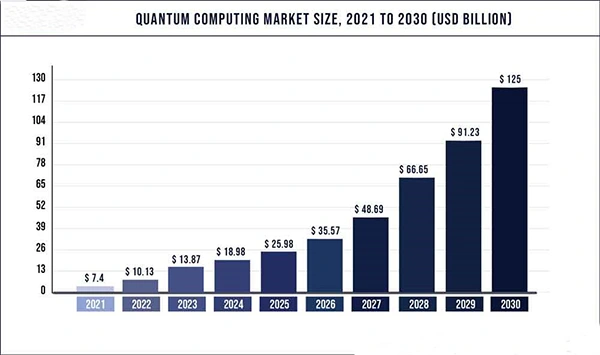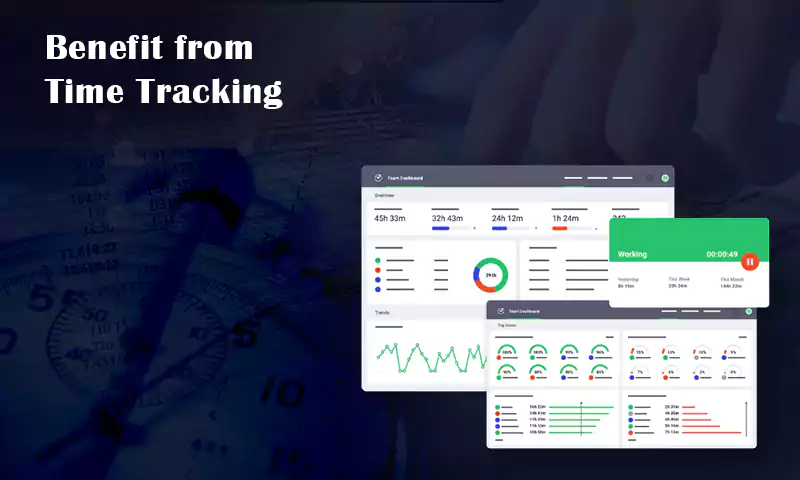Quantum Frontier Revealed: An Exploration of the World of Quantum Simulators
Within the field of advanced technology, quantum computing is a promising frontier that has the potential to completely transform the way we process information.
The quantum simulator, a potent instrument, is at the center of this quantum revolution.
A quantum simulator is intended to replicate the behavior of quantum systems, as opposed to its more well-known counterpart, the quantum computer.
This allows researchers to gain a unique perspective into the complex realm of quantum physics.

Knowing About Quantum Simulators
A quantum simulator is a specialized apparatus or system that mimics the behavior of quantum systems, some of which may be too complicated for classical computers to examine.
In other words, these are software programs that allow users to use a classical computer to run quantum circuits just like they are being run on a quantum computer.

Statistics:
In 2022, the global quantum computing market size was exhibited at USD 10.13 billion and is shortly expected to reach USD 125 billion by 2030 at a CAGR of 36.89% during the forecast period 2022 to 2030.
Quantum systems, which follow the rules of quantum mechanics, display phenomena like superposition and entanglement that go against conventional wisdom.
Because of these tendencies, modeling quantum systems with traditional computing techniques is very difficult. But, this tool is receiving applause in the world of quantum computing.
The Use of Quantum Simulators:
The most common perception about its usage is that the purpose of a simulator is to reveal information about another real system.
Real-world issues that are difficult for classical computers to handle effectively are largely handled by quantum simulators.
Quantum simulators provide a distinct edge in a variety of applications, from comprehending the behavior of materials at the quantum level to streamlining intricate procedures like financial modeling and drug discovery.
- Material Science: Understanding the properties of materials at the quantum level is made possible by the use of quantum simulators.
By simulating how atoms and electrons behave in a variety of materials, researchers can find novel materials with previously undiscovered features.
This has significant effects on a variety of industries, including electronics and energy storage.
- Drug Discovery: Quantum simulators can be used to accurately represent the complex interactions between molecules in biological systems.
By offering insights into the quantum-level interactions between pharmaceuticals and target molecules, this capability speeds up the drug discovery process and may result in the creation of more precise and potent drugs.
- Financial Modeling: By effectively managing the intricate computations required in risk assessment, portfolio optimization, and option pricing, quantum simulators have the potential to completely transform financial modeling.
The capacity to model quantum systems might give financial analysts strong instruments for improving their decision-making in a market that is always shifting.
Quantum Simulator Types Include:
Building quantum simulators can be done in a variety of ways, each having advantages and disadvantages of its own. Typical varieties include some of the following:
- Ion-Trapped Quantum simulators: These simulators model quantum systems by holding individual ions in electromagnetic traps. Every ion’s state is a qubit, which is the basic building block of quantum information.
This is built by a team that included the NIST can engineer and control interactions among hundreds of qubits.
It consists of a tiny, single-plane crystal of hundreds of beryllium ions, hovering inside a device called a “Penning trap”.
- High-Performance Quantum Simulators: Qubits are made using superconducting circuits that are kept at very low temperatures.
Fast Fact:
In 1982, the possibility of quantum computing was first proposed by physicist Richard Feynman.
These circuits are capable of simulating intricate quantum systems through manipulation and exhibit quantum behavior.
- Optical Lattice Quantum Simulators: These simulators mimic the behavior of electrons in solid-state materials by using ultra-cold atoms trapped in an optical lattice.
By giving the atoms a crystal-like shape, the lattice potential enables scientists to examine quantum processes under carefully regulated conditions.
Obstacles and Potential Futures:
Quantum computing is both the present and the future, however, they are incredibly promising, but they also have many obstacles to overcome.
Unlike those of classical computing, it uses qubits (quantum bits).
What’s great about it? The best part is that it can exist in multiple states that are probabilistically determined and is often known as “superposition”.
One significant obstacle remains decoherence or the loss of quantum information as a result of interactions with the environment.
To address these issues, researchers are presently developing better hardware and error correction strategies.
In the future, combining quantum computers with simulators may allow for considerably more processing capacity.
Researchers would be able to simulate and solve complicated quantum issues with previously unheard-of efficiency because of this synergistic method.
Share
















